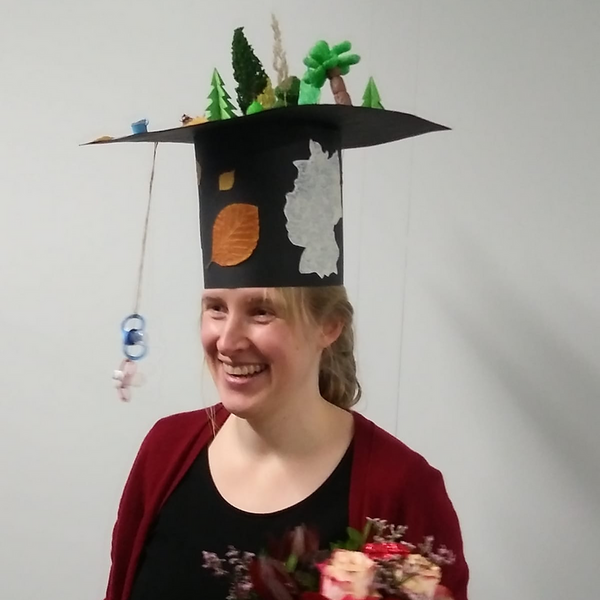
On November 29th 2018, Cora Vos successfully defended her doctoral thesis ‘Spatial variability and driving factors for soil organic carbon stocks, quality and saturation in agricultural soils of Germany’ at the Faculty of Architecture, Civil Engineering and Environmental Sciences of the Technical University Braunschweig. The doctoral thesis was accomplished in the framework of the German Agricultural Soil Inventory. Aim of the thesis was the quantification of driving factors for the spatial variability of soil organic carbon stocks and soil organic carbon fractions. Additionally the soil organic carbon saturation of the German agricultural soils should be assessed.
The thesis started out with a method comparison: The precision of soil texture measurements in the lab was compared to the precision of estimation of soil texture estimation in the field. In the second part of the thesis the spatial variability of soil organic carbon stocks in German agricultural soils and the driving factors were analyzed. This was done using different machine-learning algorithms. As not only the soil organic carbon stocks are important, but also the quality and turnover time of the present soil organic carbon, in the third part of the thesis the variability of different soil organic carbon fractions was assessed. This was done using a combination of physical soil organic carbon fractionation for a representative subset of samples and the prediction of share and carbon content of the fractions for the remaining samples, using near infrared spectroscopy. To find out which regions in Germany are most vulnerable for losses of soil organic carbon, the main driving factors for the distribution of soil organic carbon into the different fractions were also analyzed. In the fourth part a literature study was conducted and it was shown that up to now, there is no convincing evidence for the existence of organic carbon saturation in soils in field experiments. Therefore a meta-analysis with over 40 long-term experiments was conducted. All experiments featured different levels of organic fertilization. The results showed that soil organic carbon storage is mostly linearly related to the carbon inputs into the soil. A saturation behavior of soil organic carbon was not detectable.
Summarizing, it was found out that short- and long-term management decisions influence soil organic carbon stocks and their stability in agricultural topsoils. In subsoils the variability of organic carbon stocks was mainly influenced by site factors. Human influence on subsoil carbon stocks was only present where a special subsoil management (e.g. deep ploughing) had taken place. The influence of climatic variables on soil organic carbon variability and stability was surprisingly small. This could be related to a relatively small climatic gradient on the sampled agricultural soils, but also to the availability of detailed description of soil and site factors, which reduced the relative importance of climatic variables.
When assessing the future development of soil organic carbon stocks and soil organic carbon sequestration, the results of the meta-analysis on carbon saturation imply that the main question about carbon sequestration is not the one of the carbon sequestration potential of a site, but the one about the availability of biomass that can be used as a carbon input to the soil. Therefore it should be assessed in the future which factors influence the availability of biomass and how the available biomass can be used most efficiently to get synergies between soil organic carbon sequestration and other applications.

![[Translate to English:] [Translate to English:]](/media/_processed_/6/4/csm_titel_CO2Kampagne8_afeea2273e.png)
![[Translate to English:] [Translate to English:]](/media/_processed_/4/1/csm_titel_93px_CO2Kampagne8_9b0f3354d4.png)
![[Translate to English:] Logo des Bundesministerium für Ernährung und Landwirtschaft](/media/allgemein/logos/BMEL_Logo.svg)